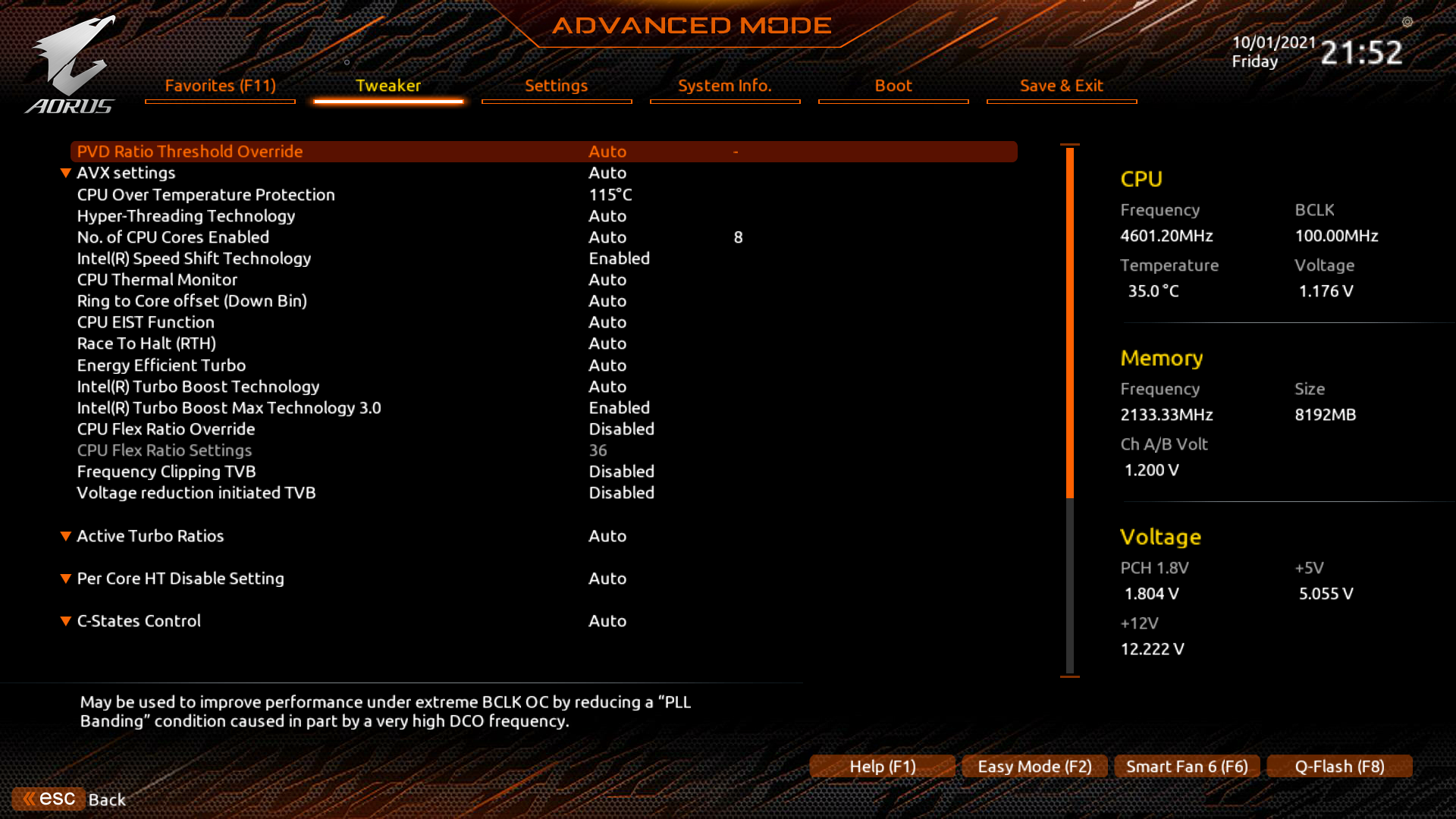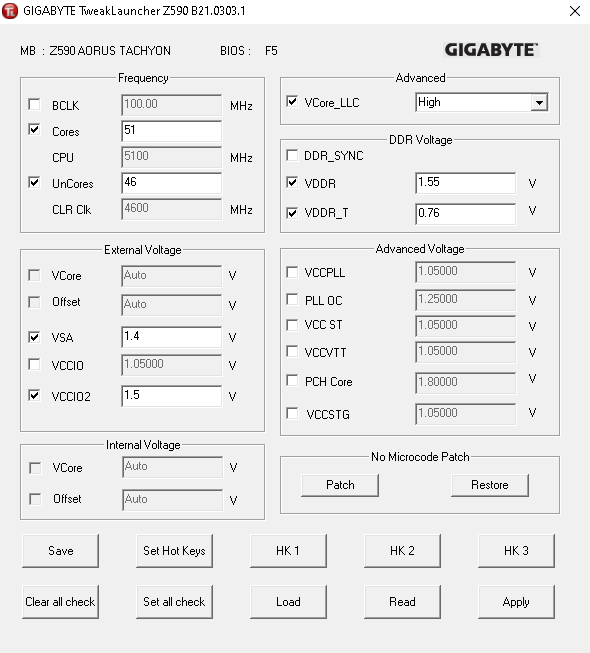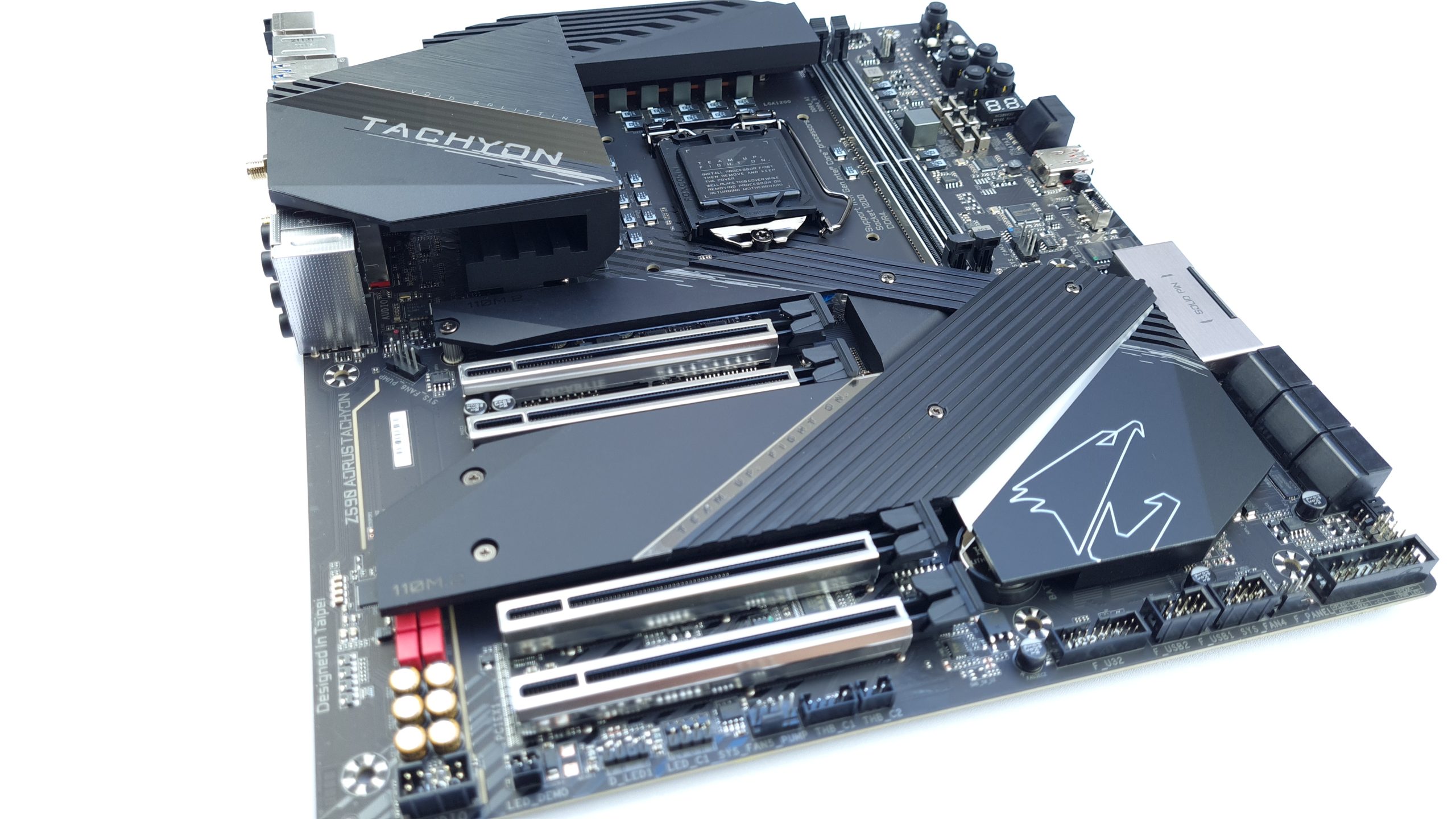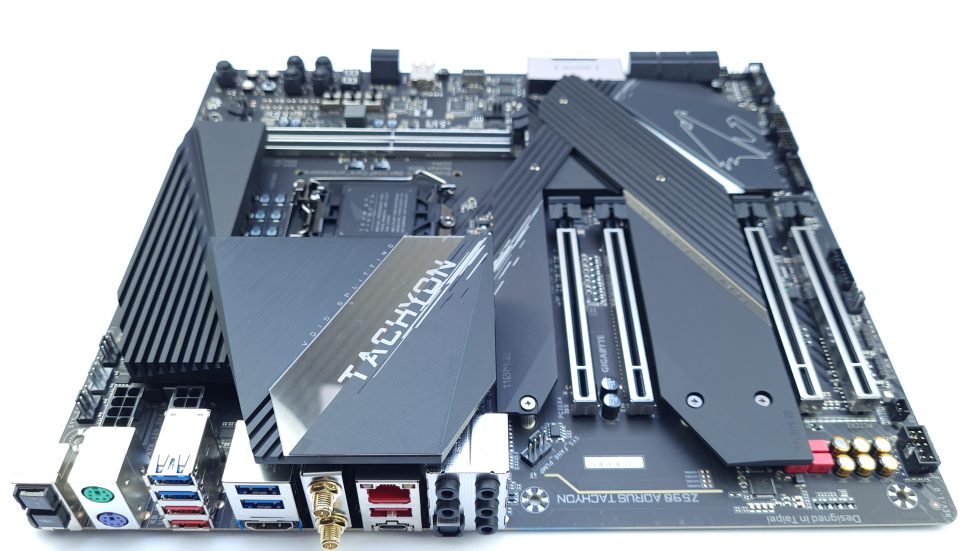Gigabyte Z590 Aorus Tachyon
Gigabyte’s Z590 XOC model has been around almost since the beginning of the CPU generation, so it’s effectively been around as long as the Maximus XIII Apex. Accordingly, one could expect a similar maturity of the BIOS and optimizations for various ICs. Well, if you’ve already read my review, you’ll know that this is unfortunately not the case. No matter which RAM IC, starting with Samsung B-Die, no matter if single or dual rank, only settings that are 1 or more divider behind the competition can be operated. The deficit is even so large that some very well optimized 4-DIMM boards clock higher.
Even though the board does everything right on paper, with on-board buttons for Power, Reset, Retry, Safe Boot, BCLK Plus, Minus and Profiles, at the end of the day the concept often doesn’t seem to be thought through. For example, three of these buttons are next to each other in the same color, so telling them apart without reading the label is often difficult. Gigabyte’s automatic dual-BIOS feature is just as questionable, which can actually be deactivated with a switch, but still intervenes from time to time. Further complicating the use is the BIOS layout, which takes some time to get used to.

I really don’t want to get into Gigabyte bashing, but if a board puts so many unnecessary obstacles in your way on the first steps, then you should address that. But the board also has positive aspects like the doubled 8 phase power supply with completely passive cooling and the PS/2 and SATA ports especially integrated for Windows XP.
The PCIe slot layout with 4 x16 slots is also convincing and offers the greatest flexibility for multi-GPU configurations of all Z590 XOC boards. By the way, the board is an 8-layer design and the RAM is connected with conventional through-hole DIMM slots, which could partly explain the clock weakness of the RAM.

The Gigabyte Tweak Launcher in-OS software works very well and uses few resources. Even though the application looks like it is 15 years old, all important voltages and multipliers can be read out and changed individually if necessary. Even the load line calibration of the power supply can be changed on-the-fly.
At the end of the day, for me the Z590 Tachyon remains a collection of many good ideas that unfortunately were never fully thought through. It may be that Gigabyte focused early on the new Alder Lake generation and therefore stopped development for Z590, but if a board already has such a large deficit in the RAM clock, as described at the beginning, and is also generally unnecessarily complicated to use, it has missed its target for me as an overclocking product. The board itself is not bad, but compared to the competition it just can’t keep up. Therefore, the Gigabyte Z590 Aorus Tachyon still doesn’t get an award from me.

GIGABYTE Z590 AORUS Tachyon




































4 Antworten
Kommentar
Lade neue Kommentare
Mitglied
Neuling
Neuling
1
Alle Kommentare lesen unter igor´sLAB Community →